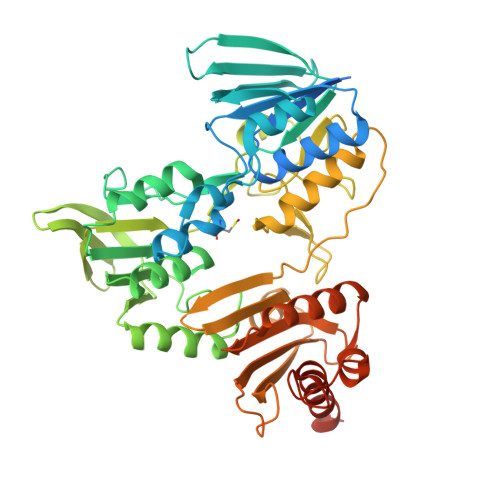A genetically encoded tool for manipulation of NADP(+)/NADPH in living cells.
Cracan, V., Titov, D.V., Shen, H., Grabarek, Z., Mootha, V.K.(2017) Nat Chem Biol 13: 1088-1095
- PubMed: 28805804
- DOI: https://doi.org/10.1038/nchembio.2454
- Primary Citation of Related Structures:
5VN0, 5VOH - PubMed Abstract:
The redox coenzymes NADH and NADPH are broadly required for energy metabolism, biosynthesis and detoxification. Despite detailed knowledge of specific enzymes and pathways that utilize these coenzymes, a holistic understanding of the regulation and compartmentalization of NADH- and NADPH-dependent pathways is lacking, partly because of a lack of tools with which to investigate these processes in living cells. We have previously reported the use of the naturally occurring Lactobacillus brevis H 2 O-forming NADH oxidase (LbNOX) as a genetic tool for manipulation of the NAD + /NADH ratio in human cells. Here, we present triphosphopyridine nucleotide oxidase (TPNOX), a rationally designed and engineered mutant of LbNOX that is strictly specific to NADPH. We characterized the effects of TPNOX expression on cellular metabolism and used it in combination with LbNOX to show how the redox states of mitochondrial NADPH and NADH pools are connected.
Organizational Affiliation:
Howard Hughes Medical Institute and Department of Molecular Biology, Massachusetts General Hospital, Boston, Massachusetts, USA.






















